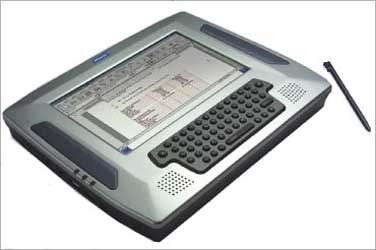
The government's $35 device gives a sense of deja vu. Will low-cost computing gather steam this time?
In May 2005, an Indian technology firm Encore Software announced a Rs 10,000 Linux-based mobile computer. Christened Mobilis, it was powered by an Intel processor, had 128MB of SDRAM, featured a 7.4-inch LCD screen, roll-up keyboard, touch screen with stylus input, six-hour battery life and a case that opened up as a desktop stand.
"This marks India's leap into the future of PC technology...," said Kapil Sibal who was, then, minister for Science and Technology. Not much has been heard of the 'Mobilis' since then.
...
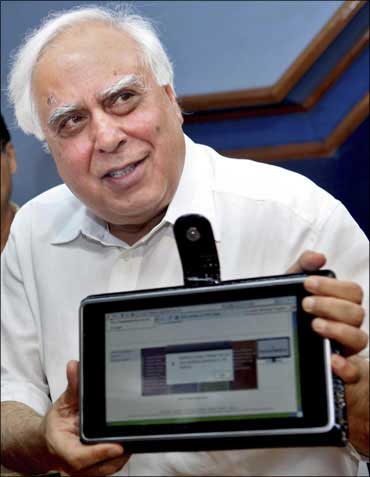
Around five years later (just last week), Sibal again - this time around as Union Minister for Human Resource Development - unveiled a low-cost, solar-powered computing-cum-access device.
To be commercially available from 2011, he pegged its price at $35 (about Rs 1,600) per piece, assuring it would gradually drop to $20 (about Rs 900) and ultimately to $10 (about Rs 400) a piece.
The device, according to Sibal, will allow users surf the internet, and also perform tasks like video web-conferencing and access multimedia content.
...
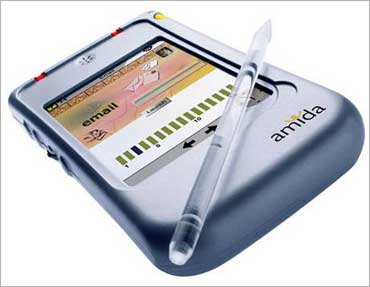
History reveals such initiatives have quickly run out of steam. Does anyone, for instance, remember the Simputer - the handheld low-cost computing device introduced by Encore again (along with PicoPeta)?
Over the last eight years, the Simputer has been used by the governments of Karnataka and Chhattisgarh besides for automobile engine diagnostics (M&M), and tracking iron-ore movement (Dempo), and (in some cases) by the police to track traffic offenders and issue traffic tickets.
Low-cost computing devices could effectively, and eventually, bridge the 'digital divide'.
However, Sumanta Mukherjee, lead PC Analyst of IDC India cautions that while the move of the government to introduce the $35 computing device is good, the word 'computing device' creates expectations in the minds of consumers.
"When these expectations are not matched, disappointment sets in," he says.
...
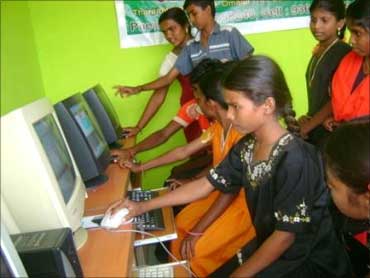
The underprivileged sections of society, whom this $35 computing device targets primarily, may prefer a keyboard to a touch-screen.
Besides, many schools in villages operate from buildings that do not have adequate infrastructure (some remote ones even operate in cowsheds). Having a Wi-Fi hotspot to leverage the device's capability may not be ambitious.
"This is an emerging space. We appreciate the government giving it a try. However, what is needed is a strategy to mass market these devices. Besides, the country needs adequate Internet (broadband) penetration to make such models a success," says Naveen Mishra, senior research analyst, Gartner.
Mishra cites the examples of countries like Italy and Japan where telco service providers have pushed up the sales of these devices.
The success of a computing model, according to analysts like Mukherjee and Mishra, revolves around a friendly operating system (OS), application-ready device, and a robust distribution model.
The government, however, has neither shortlisted manufacturers nor finalised the mode of distribution.
...
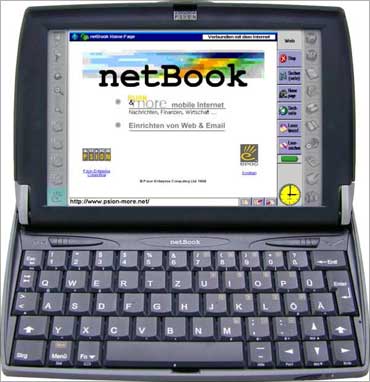
Meanwhile, manufacturing of the device is being done in Taiwan but the government is hopeful of bringing its manufacturing to India. Analysts are not convinced. The numbers of low-cost PCs are too small to justify manufacturing in India. Around 8-9 million PCs sell in India annually.
Notebooks comprise around 25-30 per cent of the total PC sales. Low-cost PCs (which include netbooks that sell for anywhere between Rs 12,000 and Rs 20,000) comprise a mere 10 per cent of the total notebook sales.
"Manufacturing in India is all about scale. This is why PC manufacturing has not taken-off in India," explains Mukherjee of IDC.
Perhaps, the first real answer to the challenge of low-cost computing for kids was the XO (which runs open-source Linux) from Nicholas Negroponte - founder of the One Laptop per Child project.
The original target cost was $100 (about Rs 4,600), but this escalated (including shipping costs) due to design upgrades (more memory and a faster microprocessor) and also because the initial production volumes would not enjoy economies of scale.
...
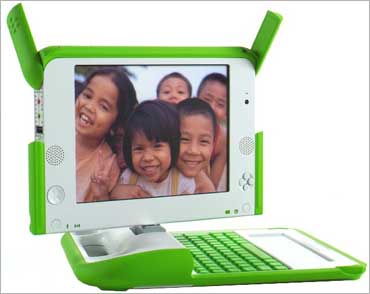
The OLPC, according to an OLPC spokesperson, has sold around 1.7 million XO laptops in 40 countries till date - Uruguay, Peru and Rwanda are the three largest installations.
But only around 700 laptops have been sold in India. The OLPC Foundation joined hands with Reliance Communications (RCom), which runs a pilot in a village called Khairat, near Karjat (in Maharashtra).
Around 31 XOs (one teacher) are used in a school in Khairat. The other XOs are running in places like Rajasthan's Keekarwali village and Nainital. Cognizant, too, has supported several schools in Chennai.
Intel, which had initially partnered but later parted ways with the OLPC project, introduced its Classmate PC for developing countries (including India), which costs between Rs 9,000 and Rs 12,000, but was launched in India in July-August 2007 for Rs 18,000.
Intel teamed up with HCL Infosystems (which offers both Microsoft and Linux) and Educomp.
...
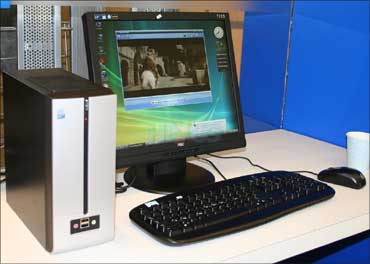
Indian and multinational PC makers like Asus, HCL Infosystems and Wipro also have Nettops (low-cost desktops), based on Intel Atom processors.
And players like Chennai-based Novatium have partnered with MTNL to offer cheap desktops at less than Rs 10,000 (including the service, monitors and so on).
The desktop called netPC costs just Rs 4,999.
Novatium offers a managed service, which means that customers store data on the Novatium servers - a good option for small- and medium enterprises too.
Research firm IDC has predicted that the new market segment, comprising small, energy-efficient and low-cost devices (netbooks and nettops), could grow from fewer than 500,000 in 2007 to 9 million in 2012 as the market for second computers expands in developed economies.
Form factors like that of the $35 'Sakshat' device, if successful, are expected to add to the numbers.